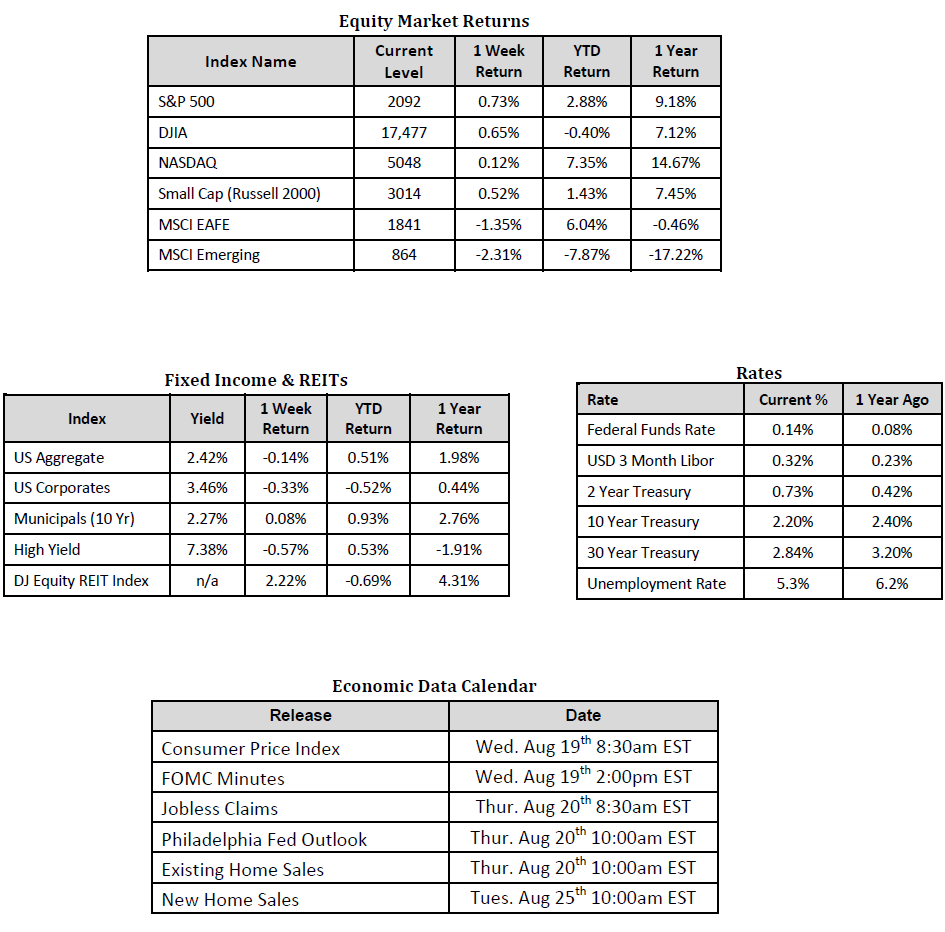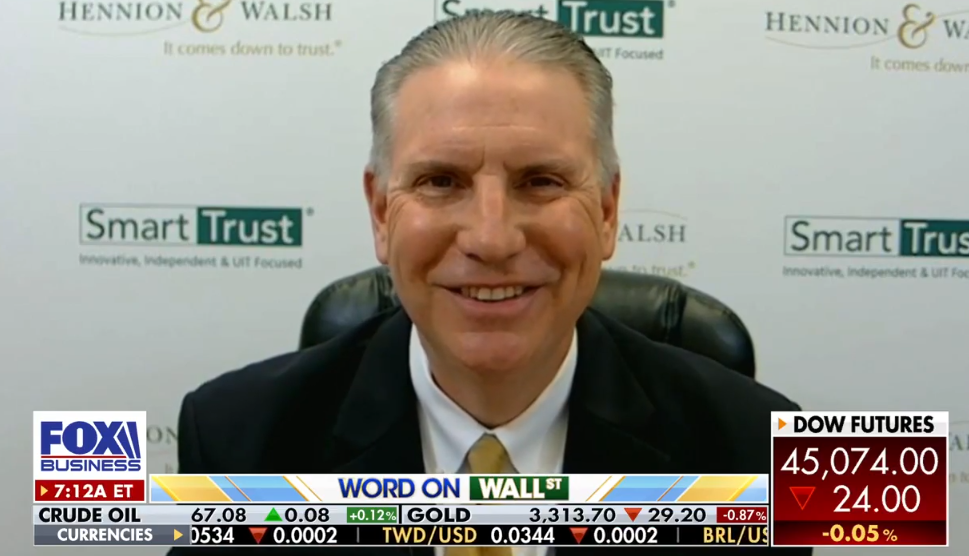
Earnings Season Comes to a Close and the September Fed Meeting Approaches
Market Overview
Happening Now
With close to 90% of the companies in the S&P 500 index having reported thus far, the much anticipated Q2 2015 earnings season is coming to a close. Investors, looking just about anywhere for hints as to when the Federal Reserve will start raising interest rates, have kept earnings reports rightly in focus for indications as to the overall health of American corporations. With headwinds such as the strong U.S. dollar, a depressed energy sector, economic and stock market weakness in China, and continued uncertainty in Europe, the market had been expecting and pricing in an overall decline in earnings growth of -4.5% for Q2 as recently as June 30th. However, according to FactSet’s latest Earnings Insight Report (published August 6), S&P 500 index components are on pace for a decline in earnings of only 1%, and when the energy sector is removed (which accounts for approximately 7% of the index) earnings growth registers a positive 5.7%.
The global economic conditions that have kept a lid on corporate earnings are also likely to play a factor in the timing of the Fed’s first rate hike to the extent that they change the Federal Open Market Committee (FOMC)’s view on longer term inflation expectations and growth in U.S. Gross Domestic Product (GDP). In the FOMC’s latest statement, released following their July 29 meeting, the decline in the price of oil and the spillover effects on inflation and inflation expectations are seen as transitory (or short term in nature) and not likely to alter their medium term forecasts. Also taken into consideration are “financial and international developments” which, while vague in their description, almost certainly include the potential slowdown in the Chinese economy and strength of the U.S. dollar relative to most major currencies. Despite these issues asset manager Bill Gross, in addition to other market professionals including us at SmartTrust®, believes that the first rate 0.25% hike will occur following the September 17 meeting.
The flow of data, divergences in developed and emerging market economic performance, and volatility in currency markets is unlike that of any other time in recent history. Investors that simply rely on historical averages when making investment decisions in this environment may be making costly mistakes that lead to an inefficient allocation of investment dollars. Now, perhaps more than ever, investors need to be reviewing their asset allocation and developing strategies so they are able to adjust when appropriate as new information is released.
Sources: Equity Market, Fixed Income and REIT returns from JP Morgan as of 8/14/15. Rates and Economic Calendar Data from Bloomberg as of 8/17/15.
Important Information and Disclaimers
Disclosures: Past performance does not guarantee future results. We have taken this information from sources that we believe to be reliable and accurate. Hennion and Walsh cannot guarantee the accuracy of said information and cannot be held liable.
Investing in foreign securities presents certain risks not associated with domestic investments, such as currency fluctuation, political and economic instability, and different accounting standards. This may result in greater share price volatility. These risks are heightened in emerging markets.
There are special risks associated with an investment in real estate, including credit risk, interest rate fluctuations and the impact of varied economic conditions. Distributions from REIT investments are taxed at the owner’s tax bracket.
The prices of small company and mid cap stocks are generally more volatile than large company stocks. They often involve higher risks because smaller companies may lack the management expertise, financial resources, product diversification and competitive strengths to endure adverse economic conditions.
Investing in commodities is not suitable for all investors. Exposure to the commodities markets may subject an investment to greater share price volatility than an investment in traditional equity or debt securities. Investments in commodities may be affected by changes in overall market movements, commodity index volatility, changes in interest rates or factors affecting a particular industry or commodity.
Products that invest in commodities may employ more complex strategies which may expose investors to additional risks.
Investing in fixed income securities involves certain risks such as market risk if sold prior to maturity and credit risk especially if investing in high yield bonds, which have lower ratings and are subject to greater volatility. All fixed income investments may be worth less than original cost upon redemption or maturity. Bond Prices fluctuate inversely to changes in interest rates. Therefore, a general rise in interest rates can result in the decline of the value of your investment.
Definitions
MSCI- EAFE: The Morgan Stanley Capital International Europe, Australasia and Far East Index, a free float-adjusted market capitalization index that is designed to measure developed-market equity performance, excluding the United States and Canada.
MSCI-Emerging Markets: The Morgan Stanley Capital International Emerging Market Index, is a free float-adjusted market capitalization index that is designed to measure the performance of global emerging markets of about 25 emerging economies.
Russell 3000: The Russell 3000 measures the performance of the 3000 largest US companies based on total market capitalization and represents about 98% of the investible US Equity market.
ML BOFA US Corp Mstr [Merill Lynch US Corporate Master]: The Merrill Lynch Corporate Master Market Index is a statistical composite tracking the performance of the entire US corporate bond market over time.
ML Muni Master [Merill Lynch US Corporate Master]: The Merrill Lynch Municipal Bond Master Index is a broad measure of the municipal fixed income market.
Investors cannot directly purchase any index.
LIBOR, London Interbank Offered Rate, is the rate of interest at which banks offer to lend money to one another in the wholesale money markets in London.
The Dow Jones Industrial Average is an unweighted index of 30 “blue-chip” industrial U.S. stocks.
The S&P Midcap 400 Index is a capitalization-weighted index measuring the performance of the mid-range sector of the U.S. stock market, and represents approximately 7% of the total market value of U.S. equities. Companies in the Index fall between S&P 500 Index and the S&P SmallCap 600 Index in size: between $1-4 billion.
DJ Equity REIT Index represents all publicly traded real estate investment trusts in the Dow Jones U.S. stock universe classified as Equity REITs according to the S&P Dow Jones Indices REIT Industry Classification Hierarchy. These companies are REITSs that primarily own and operate income-producing real estate




